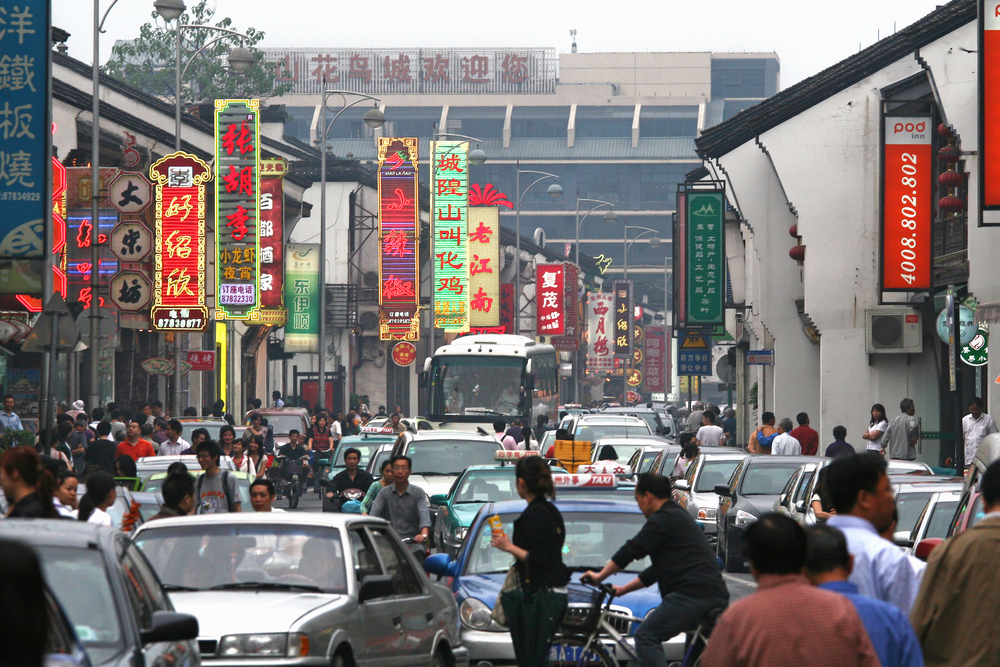
Luxury in China Gathers Strength Again: Premium Brands’ Results Confirm the Trend
Economic slowdown, high unemployment and issues in the real estate market caused China’s upper middle class, which according to McKinsey once dominated the luxury sector, to reduce its spending. International brands therefore began focusing on the group these products were originally intended for - the wealthy. According to Bait & Company, it is precisely the top 2% of high-net-worth customers who generate almost half of all revenue. Pablo Mauron, a China market expert from the marketing company Digital Luxury Group, adds that another important shift in business strategy is expansion into emerging regions. This is supported by reports that brands like Hermès returned to Wuxi after more than a decade, and American brand Coach continues its expansion into Wuhan.
More Culturally Sensitive Design
In an interview for Luxury Society, Mauron also noted that a major positive for customers has been a shift in the types of designs brands offer. As an example, he referenced the Chinese New Year, associated with dragons, the colour red, and the number eight, all of which used to dominate brand campaigns. Now, however, consumers are more likely to buy subtler designs that better reflect what Mauron calls their “cultural self-confidence.” He points to Loewe, whose New Year collection blended Chinese craftsmanship with its European character, pushing it higher in the COMPASS marketing index.
Burberry Returns to Growth
Social media platforms like Xiaohongshu and Douyin, used primarily by Generation Z, also play an important role. Burberry specifically cites this generation as a key driver of its revival, as its signature British patterns have gained popularity among young consumers. In China, Burberry’s comparable sales grew by 3% in the second quarter of fiscal 2026, reducing the decline from the first quarter. It also reported a 10% increase among returning customers. Overall, Burberry managed to increase sales by 2%, ending two years of weak results and, according to Reuters, even surpassing analyst expectations. Morningstar notes that well-executed campaigns and thoughtful design decisions helped - from advertising, to more affordable coats that became bestsellers, to a step away from leather goods and a return to the brand’s essence. In the first six months of the fiscal year, Burberry also exceeded expectations with an adjusted profit of 19 million GBP (25.5 million USD), a significant turnaround from last year’s 41 million loss GBP (53.9 million USD). The only downside was revenue, which fell 5% year-on-year. As with every luxury brand, the upcoming holiday season will be crucial, and according to Reuters, Burberry fans can look forward to a new “scarf bar” concept appearing in stores worldwide.[1]
Positive Results From Others
Other brands have also noticed a shift in Chinese spending. Coach, for example, reported a roughly 20% increase in revenue in the first quarter of fiscal 2026. Another luxury player, Italy’s Prada, recorded a 10% year-on-year increase in revenue in the third quarter of 2025, though this represents the APAC region as a whole, not China exclusively. Prada’s CFO Andrea Bonini told CNBC he remains optimistic, expecting a more stable environment next year. French giant LVMH also noted positive developments in China. And finally, Richemont, owner of brands like Cartier and Montblanc, also reported improvement. After periods of double-digit declines, it finally achieved modest growth in the APAC region.[2]
A Light at the End of the Tunnel?
Even though Chinese consumers have begun spending more on non-essential items, it is still too early to declare a full recovery. According to Chiara Battistini from JPMorgan’s European Luxury Goods division, the trend is not a sign of overall improvement but rather a shift of spending back into China. She told CNBC that the country’s economic situation remains challenging. Data from Morgan Stanley confirm that Chinese consumers are indeed spending more at home - domestic purchases rose to 70%, up from 33% before the pandemic. Another factor is the rise of local brands, some of which have outperformed foreign luxury houses. According to Bloomberg, examples include Songmont, known for its leather handbags, and the jewellery house Laopu Gold. Revenue for Songmont has risen 90% compared with two years ago, while Laopu Gold surged by an astonishing 1,000%. By comparison, sales of bags by Gucci and Michael Kors dropped by roughly half. Again, it shows that Western labels are no longer the main priority — cultural resonance and the ability of local brands to adapt now matter more.
From reports and analyses of the Chinese market, it is clear that the upcoming period will be crucial for the luxury sector, including the strategic choices brands make. Many industry leaders, including Mauron from Digital Luxury Group, remain optimistic but cautious.[3]
[1,2,3] Forward-looking statements are based on assumptions and current expectations that may be inaccurate, or on the current economic environment, which may change. These statements are not guarantees of future performance. They include risks and uncertainties that are difficult to predict. Actual results may differ significantly from those expressed or implied in any forward-looking statements.

